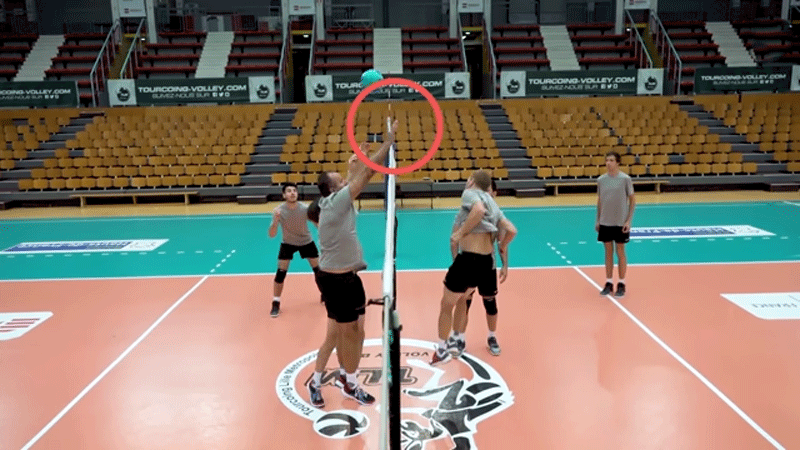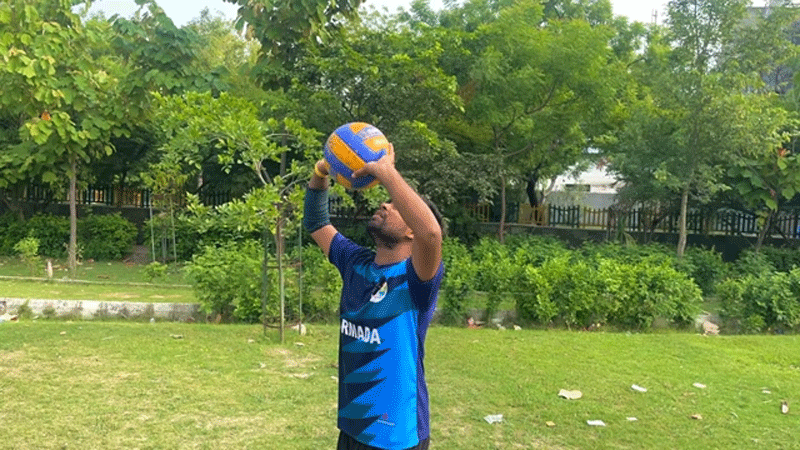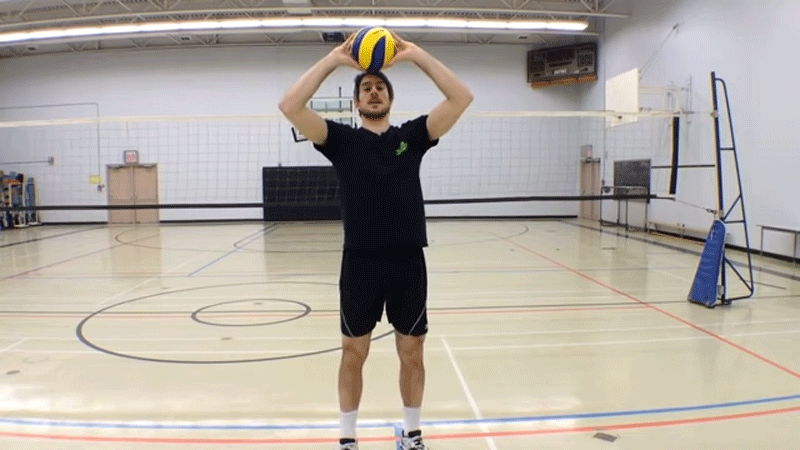What Is A Lift in Volleyball?
One of the reasons we love volleyball so much is because it’s an easy sport to learn.
To outwit, outmatch, and outmuscle your opponent, getting the ball over the net in three touches (or fewer) is essential.
The game becomes more complicated as the player advances in any competitive sport.
Closer attention to rules and regulations is paid by higher levels of government.
Falling under this category is a rule called a lift.
What is a lift in volleyball?

According to rule 9.2.2 of the FIVB rulebook, colloquially, a lift can be described as a carry or a held ball, involving no catching or throwing of the ball.
Derived from rule 9.2.2, the definition of a lift should be referred to in rule 9.3.3.
When the ball is caught or thrown and fails to bounce back after being hit, it qualifies as a lift.
The preferred method of moving the ball involves passing, setting, or hitting it, rather than resorting to catching and throwing.
If there’s a pause with the ball in your hands or body before it changes direction, lifts will likely be required.
You’ll notice an increase in lift calls while observing younger players, whereas competitors at higher levels seldom encounter this issue.
Most commonly committed by young setters attempting to use their fingers to set the ball, the violation of a lift can be called on any player, regardless.
Subjective decisions regarding lifts are made by the referees.
An infraction of out-of-bounds is far more objective compared to a violation involving illegally touching the net.
Instances in which a lift may occur during a volleyball match include the following.
Attacking Lift Call
At this time, it’s unlikely that a lift call will be made.
A simple definition of attacking the ball is the act of moving it toward your opponent.
The FIVB rules address lifts that occur during attacking situations:
Only if it’s cleanly struck during an attack hit and not thrown or caught, may the ball be tipped.
Likely to result in a lift during an attack are players who attempt to guide a ball with their fingertips instead of a flat hand. It’s recommended for attackers to employ a top-down attack, hitting the ball down.
When players tip or dink, it’s essential that their fingers remain stiff and strong, or alternatively, they should utilize their knuckles.
If the ball is guided for an extended period by a swipe, it constitutes a lift violation.
A strategic attack involves the use of a strong tip, serving as a launch mechanism in a sense.
As long as the player isn’t significantly guiding the ball, I don’t believe it’s a problem.
A sudden motion should be used to tip the ball toward the target.
Passing Lift Call
When passing from a platform, there’s a possibility of a lift call occurring.
Struggling to propel the ball with their legs, young players and beginners often resort to using a lift when passing.
What cannot be overstated is the importance of teaching young players not to rest the ball on their elbows.
To successfully move the ball, having square feet, a flat platform and ample energy in the legs and shoulders is crucial.
Setting Lift Call
Most frequently, lifts occur during the set.
This mistake is almost always attributed to beginner setters or individuals attempting to set in relief.
Important for setters is having soft, smooth hands as it allows them to hide catch-and-throws that might otherwise be detected.
A challenging task for referees is watching each set to determine whether a lift is committed.
In the calling of a lift, volleyball referees sometimes face difficulty, with variations in their willingness to do so.
Preventing a lift is achieved by setting the ball in one motion.
Avoid letting the ball sink too low toward your chest or come too close to your face.
As a result of the setter spending an extensive amount of time with the ball in their hands, lift violations will undoubtedly occur.
Having strong wrists, arms, and shoulders is advantageous for setters.
During training, it’s beneficial to focus on these areas to minimize the likelihood of lift calls caused by weakness.
When a lift would not be called

There are instances during volleyball matches where it might seem like there’s been a lift violation, yet it hasn’t been called.
An example illustrating this is the net battle.
When players from both teams hold the ball together above the net to block a ball, it’s not considered a lift in such situations.
Play resumes immediately after the ball falls to either side of the net.
Inheriting some characteristics from beach volleyball, such as its defensive nature, is evident in indoor volleyball.
A momentary hold of the ball by a defensive player after receiving a hard ball doesn’t qualify as a lift.
Rarely called a lift in that situation is when a ball gets stuck in your fingertips and cannot be thrown to a teammate.
Lift Avoidance

Being called for a lift can often lead to a lot of frustration and embarrassment.
Using proper mechanics every time you touch the ball helps prevent a lift.
Most lift calls can be avoided when a person adopts an effective defensive posture, pays attention to pass platforms, and maintains proper hand placement.
Strength training not only prevents lifts caused by weakness but also mitigates movements resulting from weakness.
Because their mechanics have been perfected to such a high degree, lift occurrences are rare among higher-level volleyball players.
To evade a devastating lift call in a match, coaches should emphasize the significance of proper passing and setting forms.
Conclusion
In volleyball, mistakes are easily made due to the complex rules and the absence of any margin for error, necessitating a thorough understanding of the various ways penalties can be incurred during play.
Your reflexes will improve with time, patience, and practice as you understand the rules, so consulting your coach’s rulebook or the FIVB volleyball rulebook for clarification on lift rules is advisable.
Also Read: What is a kill in Volleyball?
